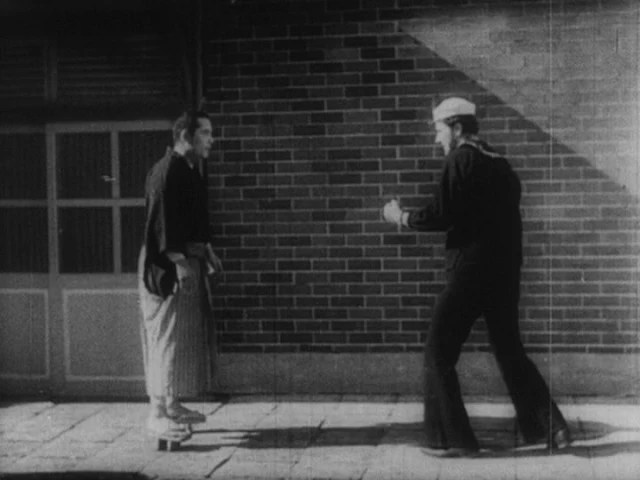 |
| Nicole Kidman and Zeljko Ivanek in Dogville |
Grace Margaret Mulligan: Nicole Kidman
Tom Edison: Paul Bettany
Gloria: Harriet Andersson
Ma Ginger: Lauren Bacall
Mrs. Henson: Blair Brown
The Big Man: James Caan
Vera: Patricia Clarkson
Bill Henson: Jeremy Davies
James McKay: Ben Gazzara
Tom Edison Sr.: Philip Baker Hall
Ben: Zeljko Ivanek
Olivia: Cleo King
Liz Henson: Chloë Sevigny
Chuck: Stellan Skarsgård
Director: Lars von Trier
Screenplay: Lars von Trier
Cinematography: Anthony Dod Mantle
Production design: Peter Grant
Film editing: Molly Malene Stensgaard
Lars von Trier's Dogville has weathered an initial critical reaction that dismissed it as "Our Town on downers" to become among his most admired films. But that may be in part because von Trier's life and works have been the focus of so much intense controversy since the film was made, so that Dogville looks like a relatively stable and focused work, especially in comparison with Antichrist (2009), which provoked walkouts at Cannes, and Nymphomaniac (2013), his sexually explicit epic-length film. Von Trier has also been plunged into controversy after joking in an interview that he was a Nazi -- he later apologized and said he was drunk when he made the comment -- and by charges of sexual harassment during the making of his films. He has become something of a latter-day poète maudit, whose defenders are as passionate as his detractors. But Dogville, though overlong and perhaps too show-offily "experimental" in its minimalism, tells a strong story with the help of some gifted performers, particularly Nicole Kidman, who gives one of the best performances of a remarkable career in the role of Grace, the gangster's daughter who winds up being abused by and then destroying the titular town. Some of the criticism initially directed at Dogville centered on its supposed "anti-Americanism," which seems to me wrong-headed. Is the barely masked greed and hypocrisy of Dogville's inhabitants indigenous to America? Is its portrayal of the dark side of frontier village life any more an indictment of America than that of the town of Presbyterian Church in Robert Altman's McCabe & Mrs. Miller (1971), a film that I've never heard called anti-American? And anyway, there's nothing more American than the freedom and willingness to criticize America. Why not extend that freedom to Danish filmmakers, too?








